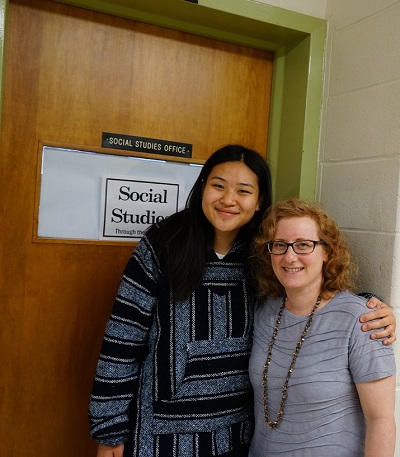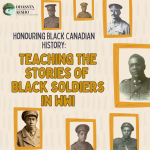
The Case Study: Where Business and History Meet OR How History Courses Can Foster the Skills Necessary for Business Programs
By Alice He
As one of the most widely used learning tools in post-secondary business programs today, case studies are an inevitable fate for many students. I found this statement to be most true, having just finished my first year of Commerce at Queen’s University and realizing that case studies were used in every qualitative course I took.
Despite their ubiquitousness in the post-secondary business sphere, high school students are rarely exposed to case studies. This is understandable– given the time constraints and the strict pre-set curriculum expectations that high school educators face. But, that is not to say there aren’t ways in which students can hone the skills instrumental to successfully conducting a case analysis. In many ways, history courses can adequately prepare those students who will inevitably face the case study method. From my own experience, despite having no formal exposure to business cases, I was able to utilize the skills –gained solely by taking World History all throughout high school, using the inquiry-based approach, and employing historical thinking concepts– to successfully conduct business case analyses.
To clearly understand why historical thinking and inquiry-based strategies are so indispensable to cases, one must first grasp the purpose of the case study. In essence, a case presents an overview of a company’s situation. The recipient of the case must generate a solution to a key issue identified within the company, then examine the implications of their recommendations. Even in theory, business cases resemble historical essays that I wrote in CHW3M and CHY4U. In both applications, I had to identify a trend or cause—which served as a guiding thesis, propose various recommendations or subtopics, and argue how these recommendations solved the key issue— by relating my subtopics back to the guiding thesis.
In practice, however, a case differs slightly from the historical essay as it follows a different outline. Most case analyses begin with the issue overview where the underlying problem facing the company is presented. This is proceeded by a situation analysis to provide context on the on the company and industry. Flowing from the analysis are logical alternatives for solutions to address the key issue. Upon evaluating these alternatives and choosing the best solution, actionable recommendations must be generated for the company. Finally, there is an analysis of the financial impact, implementation steps, and risks that must be mitigated with their recommendations. Nonetheless, even as the case becomes more complicated, there are countless ways in which historical thinking and inquiry skills remain necessary to conducting an insightful analysis.
When I analyzed my first full case, about McDonald’s, I had to begin with the daunting issue overview and problem statement. This first step was and remains the most challenging since cases typically state symptomatic issues of a company, not underlying problems. But the problem statement is also the most crucial aspect of any case; much like a thesis statement, it serves as a foundation for the entire analysis. So, to identify the problem, I employed one of the fundamental techniques in inquiry-based learning: annotating my document with the analytical and application synthesis questions that I had. As I read through the company’s symptomatic problems, I wrote down questions like “why are customers so dissatisfied” and “why are competitors more appealing to consumers,” to guide my thinking and uncover underlying issues.
Using this technique, I came up with several potential problems. To then condense the issues into a problem statement, I applied my understanding of cause and consequence. All throughout my high school history courses, I had been encouraged to identify and analyze the countless causes and consequences of complex historical events. It was through these activities that I learned each consequence has numerous causes and vice-versa. It was further emphasized that causes have varying levels of influence on a consequence. Applying this understanding, I ranked the key problems and crafted a statement describing the most influential causes. This is how I utilized historical thinking and inquiry-based learning to craft an encompassing, yet concise problem statement for my analysis.
I also found that I could employ the skills developed in an inquiry-based history classroom to conduct a situation analysis under a time constraint. My case was open–meaning that I could use external information to supplement my analysis. While open cases are beneficial, under a time constraint they also hold potential to hinder a case. It is easy to become overwhelmed and waste time analyzing irrelevant, often conflicting primary source documents about a company. To avoid these potential pitfalls and find purposeful evidence during my time limit, I employed skills learned from working with primary source documents in my history classes.
More specifically, to guide my research and narrow down my information, I annotated my case with factual and predictive inquiry questions. Once I found relevant primary source documents, I made sure to corroborate information. As an example, I corroborated information about customer service quality from the McDonald’s site with findings from recent market research studies. Finally, and most importantly, I used the inferences I derived from the PSDs to select what information I would include in my situation analyses. Based on the inferences made from the primary sources, I included the evidence which most strongly supported the narrative about the company’s current state and led logically to my proposed solutions.
To craft compelling recommendations, I applied my skills from analyzing historical perspectives. I quickly learned that the best way to strengthen a recommendation is to take on the perspective of an opponent, generate arguments to poke holes in your own suggestion and then mend it to address these perspectives. In many ways, I had practiced this in history class, where we had been taught to seek and generate various historical perspectives on a given event. The instinctive desire to recognize and generate conflicting perspectives was essential to improving my recommendations.
The final crucial step was to justify why the proposed solution would solve the overarching problem. In a case, warned my professor at Queen’s, one of the most common mistakes is failing to clearly justify how a recommendation solves the initial key issue. Upon hearing this, I recalled the words of my history teacher, who would always tell us “Don’t just say it, explain it.” The similarity of their advice suggests that, like a body paragraph in a historical essay, a well-crafted case recommendation must contain evidence and argument in equal proportion. The point-evidence-argument structure, emphasized countless times throughout my history courses, proved to be instrumental in proposing convincing recommendations.
Conducting my first case analysis was one of the greatest academic challenges of my first year. But I am grateful to have had the opportunity as it brought the profound realization that historical thinking concepts and inquiry- based techniques will continue to contribute greatly to my learning. That such skills can be applied to a method as specific as the case study, demonstrates the importance of historical thinking, beyond history. It proves that the skills uniquely developed in high school history courses and inquiry-based classrooms lay the groundwork for future student success, no matter the path students choose to pursue.
Alice He just finished first year at Queen’s University.


